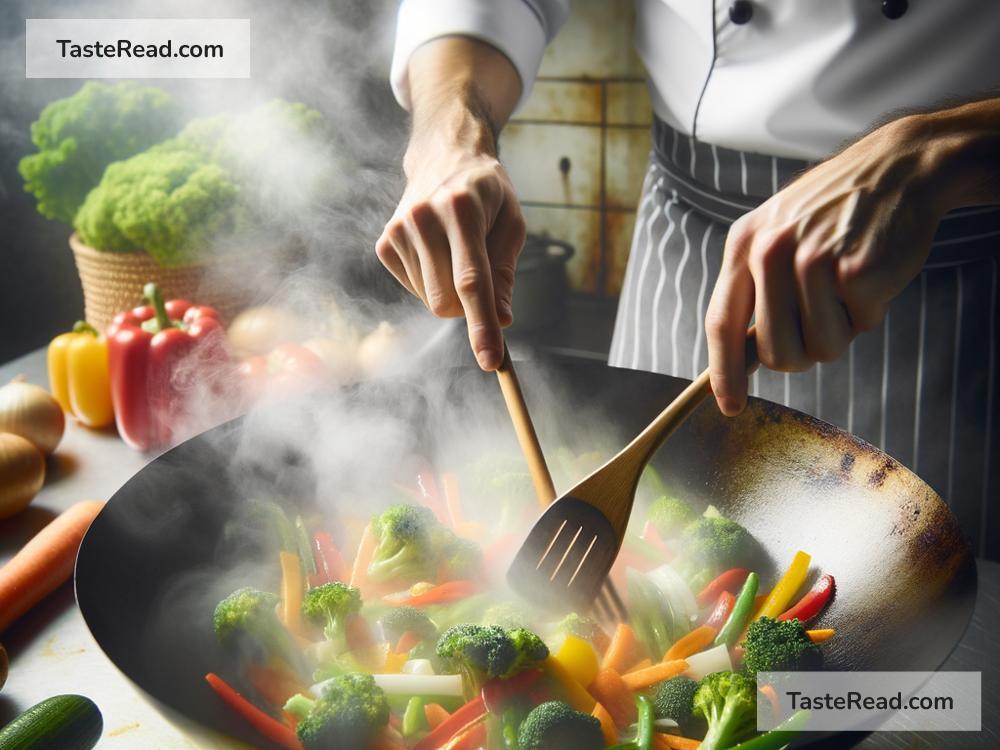Learning to Cook with a Wok: My Experience with Asian Culinary Techniques
Cooking is an art that varies enormously from one region to another. Each style brings its flavors, techniques, and uniqueness to the table, quite literally. My adventure in the realm of cooking took a turn towards the East, and it has been an enlightening journey. I took it upon myself to learn how to cook with a wok, the staple of Asian culinary techniques.
The wok, a versatile round-bottomed cooking vessel, is the backbone of much Asian cooking, particularly Chinese cuisine. It’s used for stir-frying, steaming, poaching, boiling, and deep-frying. This tool intrigued me due to its ability to cook food quickly and healthily. The key lies in its design, which ensures even heat distribution.
My journey began with apprehension. Initially, the wok seemed big and somewhat intimidating. The technique of stir-frying itself was a dance of sorts – flipping and tossing ingredients to ensure they cooked evenly without burning. But my apprehension turned into excitement. It was more than just cooking; it was learning a skill, embracing a new culture.
The first step was to ‘season’ the wok. This process is crucial for any new wok, preparing it for cooking and ensuring it is non-stick. The process involves coating it with oil and heating it until it smokes, then repeating. This procedure not only primes the surface but also begins your journey into wok cooking with a sort of ritual, imbuing your future endeavors with a sense of respect for the tradition.
Once my wok was seasoned, I was ready to dive into the world of stir-fry. The principle was simple enough: cook food quickly over high heat with a small amount of oil. But mastering the flick of the wrist and the constant motion needed to prevent sticking was a challenge. It was a lesson in patience and precision, understanding the heat, and knowing just the right moment to add each ingredient.
I started simple with a classic – vegetable stir-fry. The key, I learned, was in the preparation. Each vegetable was cut uniformly to ensure even cooking. The sequence of adding the ingredients mattered too; those that took longer to cook went in first. With each attempt, I got better, more confident. The vegetables began to retain their crispness, and I found the rhythm in the chaos of sizzling and tossing.
Emboldened, I moved on to proteins. Cooking meat in a wok was a revelation. The high heat seared the outside perfectly while keeping the inside tender and juicy. I experimented with different marinades and sauces, discovering the magic of balancing soy sauce, oyster sauce, and a touch of sugar. Each dish came out with a richness of flavor, a harmony of salty, sweet, and spicy.
Beyond stir-fry, I explored other techniques. Deep-frying in a wok was efficient and less messy than I anticipated. The conical shape required less oil, and the high sides prevented splatters. Steaming, too, was a joy. The wok’s shape perfectly accommodated a bamboo steamer, allowing me to steam vegetables and dumplings to perfection.
But it wasn’t just about the cooking. It was about understanding a culture through its food. Each dish told a story, a snippet of history, or a family tradition. I learned not just how to use a wok, but why. The wok is not just a cooking utensil; it’s a link to centuries of culinary tradition. It reflects the philosophy of balancing yin and yang, of harmony and moderation.
In my journey, I’ve discovered that cooking with a wok is more than just a technique; it’s a gateway into a rich, vibrant world of flavors, aromas, and traditions. It’s taught me the value of simplicity, the importance of preparation, and the beauty of balance. Each meal is a lesson, each failure a step towards mastery.
For anyone looking to dive into the world of Asian culinary techniques, I cannot recommend the wok enough. It’s not just about the delicious meals you’ll create; it’s about the journey, the history, and the culture you’ll experience along the way. So, grab a wok, season it with care, and step into a world where cooking is an art, and every dish tells a story. Embrace the challenge, and who knows? Maybe you’ll find, as I did, that the wok is not just a tool, but a teacher.


